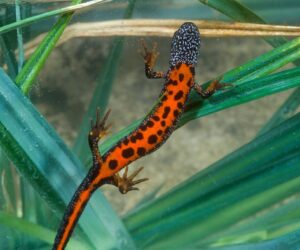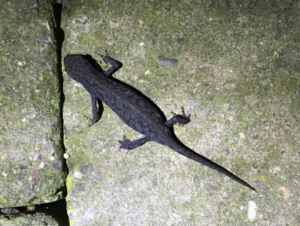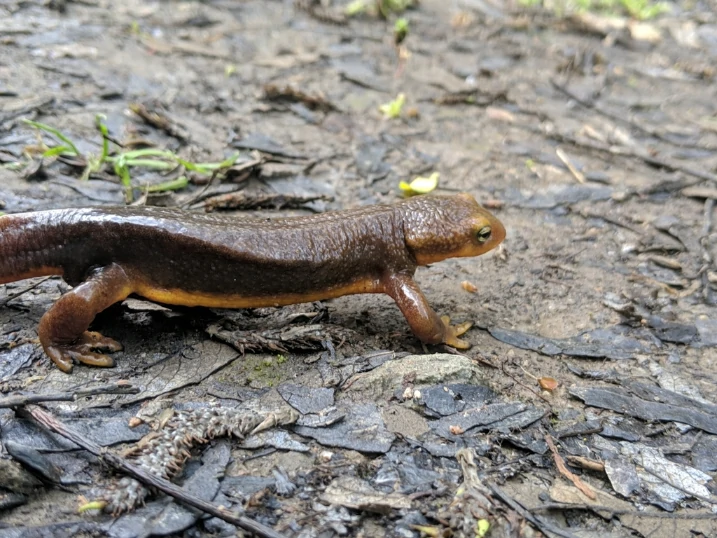Newts look harmless, but when you see them in your garden, pond, or forest, you might wonder: are newts invasive?
Newts are not always invasive, but some can become a problem if they are moved outside their natural homes. Most native newts live quietly in balance with the local ecosystem, but newts from other places can mess up food chains, compete with local amphibians, and even spread diseases.
Even though they are tiny, newts play a big role in their environment. In their home areas, they help keep insect numbers in check and provide food for birds, fish, and mammals.
But when humans move them to new places (sometimes by accident, sometimes on purpose) they can become guests that don’t always mix well.
What “Invasive” Really Means
When people say an animal is invasive, they mean it has moved into a new area and starts causing trouble. For newts, trouble can look like this:
-
Eating too many insects, leaving less food for native species.
-
Competing with local amphibians for shelter and breeding spots.
-
Carrying diseases that local wildlife hasn’t faced before.
For example, the Japanese fire belly newt, often sold in pet shops, is bright orange and beautiful.

But if it escapes into ponds or streams outside Japan, it can compete with local frogs and salamanders.
These newts reproduce quickly and have few predators in the new area. That’s basically how a species becomes invasive.
Native vs. Non-Native Newts
Most of the time, newts you see are native species. In North America, for example, the Eastern newt lives in ponds, streams, and forests along the East Coast.

It’s not invasive because it belongs there. It goes along with frogs, salamanders, and small fish.
But when people bring non-native newts from Europe, Asia, or other parts of the world, problems can start.
Non-native newts might eat eggs of local frogs or compete for hiding spots under logs and leaves.
You might not notice at first because the pond still looks calm, but over a few seasons, native amphibians may start to disappear.
How Newts Spread
Newts are small and not always easy to see. They can hide in damp soil, under rocks, or among aquatic plants. But humans often help them move without realizing it:
-
Releasing unwanted pets into ponds or lakes.
-
Carrying them on wet nets, boots, or fishing gear from one pond to another.
-
Moving plants from one area to another, which may hide newt eggs or larvae.
Even a single newt in the wrong pond can start a chain reaction if it reproduces and survives without predators.
Signs That a Newt Might Be Invasive
It’s not always easy to tell. You might notice:
-
A sudden increase in small amphibians where they weren’t seen before.
-
Local frogs or salamanders disappearing or becoming less common.
-
Strange changes in insect numbers.
For example, in Europe, the Alpine newt has become invasive in parts of the UK.

Garden ponds and small lakes now have high numbers of these newts, which compete with native species and change the local balance.
Why Not All Newts Are Bad
Before you start thinking all newts are dangerous, remember that most are harmless and even helpful. Native newts:
-
Eat insects, slugs, and other small pests in gardens.
-
Provide food for birds, snakes, and fish.
-
Show that water is clean because they need healthy ponds and streams to survive.
In a way, seeing native newts in your garden is a good sign that the environment is healthy. They quietly do their jobs without causing trouble.
What to Do If You Suspect Invasive Newts
If you think non-native newts have entered your pond or local streams, here are some careful steps:
-
Don’t release pets into the wild. Even if they seem small and harmless, they can mess up the local ecosystem.
-
Check with local wildlife authorities. Many areas have rules for handling invasive species.
-
Prevent accidental spread. Clean equipment, nets, and shoes before moving between water areas.
-
Watch carefully, but don’t panic. Not every newt is invasive, and most are harmless.
Even a few simple precautions can stop a minor problem from becoming a bigger one.
The Role of Humans
Humans play a big part in making newts invasive, or keeping them in balance.
Pet owners sometimes release exotic newts without realizing the effects. Gardeners move aquatic plants between ponds, unknowingly carrying eggs or larvae.
Fishermen might carry newts from one lake to another stuck under boat nets or gear.
Basically, newts themselves aren’t trying to take over the world, it’s our actions that give them the chance.
How Newts Can Be Part of Healthy Ecosystems
Native newts are a sign of balance. In ponds where they belong, they:
-
Eat pests that might damage plants or crops.
-
Provide food for birds, snakes, and other wildlife.
-
Help keep the water clean by eating decaying matter or insects in the water.
In a way, they are little guardians of the pond. They move quietly, eat just enough to survive, and don’t interfere with other species when left in their home environment.
Conclusion
Not all newts are invasive. Most are native species that live quietly and help the ecosystem.
But non-native newts, moved by humans, can become invasive if they spread in new areas without predators.
They can compete with local amphibians, change insect numbers, and even bring new diseases.
The key takeaway? Enjoy newts in your garden or pond if they belong there, and don’t release exotic species into the wild.
Watch them swim, see how their tails sway, and notice how they eat insects or hide under leaves. They are fascinating little creatures that are best appreciated where they belong.
Even a tiny newt reminds us how delicate the balance of nature is, and how our choices can tip it.
Hi, my name is Ezra Mushala, i have been interested animals all my life. I am the main author and editor here at snakeinformer.com.

